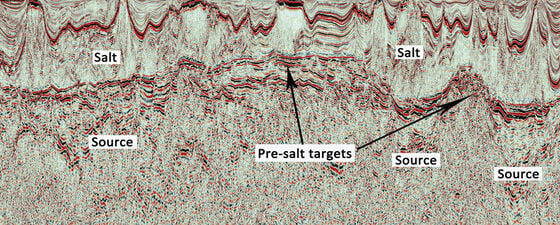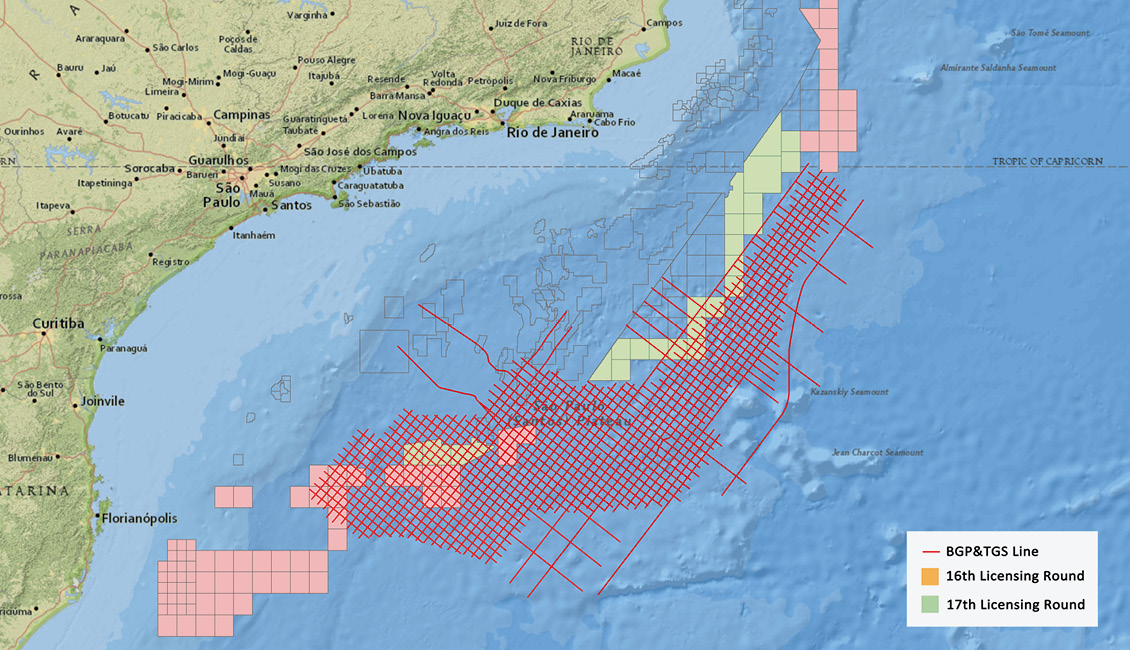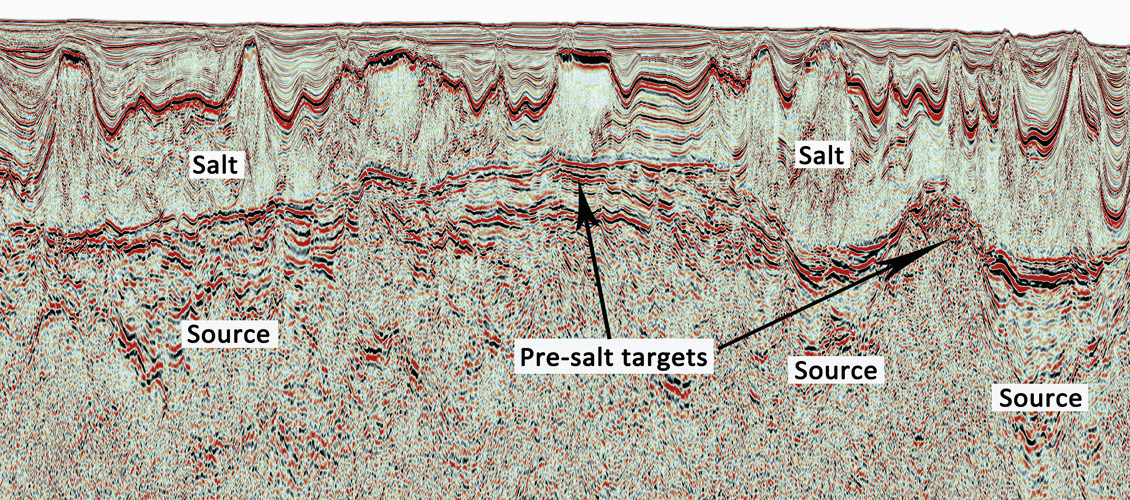In the past decade, a large number of major discoveries have been made in pre-salt plays in deepwater areas of the Santos Basin. These highlight the outstanding world class exploration potential remaining within this basin, where the discovered fields have an average reserve of more than 1 billion barrels of oil, making the Santos Basin an important global exploration hotspot.
Geological Setting of The Santos Basin
The Santos Basin is located in the south-east of Brazil and covers an area of 320,000 km2. It is a typical passive continental margin basin and is acknowledged as one of the most prolific hydrocarbon-producing basins in the world.
The formation of the Santos Basin is related to the breaking-up of Gondwana continent and the expansion of the Atlantic Ocean, which has been taking place since the Mesozoic. The tectonic evolution of the basin can be divided into three stages: intracontinental rift, intercontinental rift and a passive continental margin stage. These three periods of tectonic evolution correspond to three major depositional sequences found in the basin. These are the continental sequence of the Guaratiba Group, which was deposited during the rift period; the Ariri Group salt rock sequence, which accumulated throughout the transitional period; and finally the marine sequence of continental margin carbonate and deepwater shales and turbidites, which developed during the drift period.
Large Pre-Salt Prospects in the Ultra-Deepwater Santos Basin
During 2016 and 2018, BGP in partnership with Spectrum (now TGS) acquired multiclient 2D seismic data in the outboard south-eastern part of this oil province in the ultra-deepwater areas of the Santos Basin, as shown on the map below. The survey consisted of 25,000 km of long-offset high resolution seismic data with 12 km streamer length and 15 seconds recording length, which is designed to improve the deep imaging. Pre-stack time migration (PSTM) and pre-stack depth migration (PSDM) were undertaken and the results have been available since early 2019.
This survey was designed to make up for the shortage of seismic data in the ultra-deepwater areas in the Santos Basin, by providing high quality seismic data to identify favourable pre-salt plays. The survey area is believed to hold tremendous hydrocarbon potential and is expected to share the same play elements as those associated with discoveries in the known Santos Basin oil province.
Based on a comprehensive analysis on the discovered oil province in the deepwater Santos Basin, a number of conditions have been identified as crucial for pre-salt plays in the basin. These include an excellent salt cap rock, high quality source rocks and large carbonate anticlines.
Combining both regional geological information and this new seismic data, comprehensive evaluation work has been carried out and the distribution of pre-salt play elements in ultra-deepwater areas of the Santos Basin have been identified. Aptian salt is found to be widely developed and is very thick over much of the area: up to 4 km in places, although gradually becoming thinner and eventually disappearing when it reaches the south-eastern edge of the basin. This thick and continuous salt is an excellent cap rock for pre-salt traps. The same set of lacustrine source rocks is developed in the survey area as in the oil province. This oil-prone Barremian source rock is verified by wells with TOCs of 3–6% and kerogen of type I. Large rift sedimentary depressions that are thought to contain this lacustrine source rock are recognised in the survey area, and these could provide high quality oil and gas source kitchens.
Carbonate reservoirs beneath the salt are shown as relatively strong events on seismic sections. A large number of untested Aptian lacustrine carbonate anticlines with four-way dip closures – the main target for exploration in much of the Santos Basin – have been recognised in the survey area, and favourable analogues with pre-salt plays are identified on seismic, as seen on the image above, highlighting the great potential for oil and gas exploration that this area possesses.
Many oil giants, such as Total, Shell, Chevron and BP, entered the blocks in the 16th licensing round in 2019. The 17th licensing round scheduled for 2020 was delayed by the Covid-19 pandemic and will now take place in 2021 and this multiclient 2D seismic data will provide support for oil companies looking for exploration opportunities in the ultra-deepwater areas of the Santos Basin.
Significant Discoveries to Come?
This brief overview shows that the ultra-deepwater of the Santos Basin is a frontier area over which there was very little seismic information until the BGP-TGS multiclient 2D seismic surveys, the data from which will help interested parties to gain a comprehensive understanding of the region. The survey area shows great hydrocarbon potential and is an excellent exploration opportunity for oil companies, as a large number of pre-salt leads have been identified from this data. It will provide insight into this undrilled province and support oil companies entering into blocks in future licence rounds.







